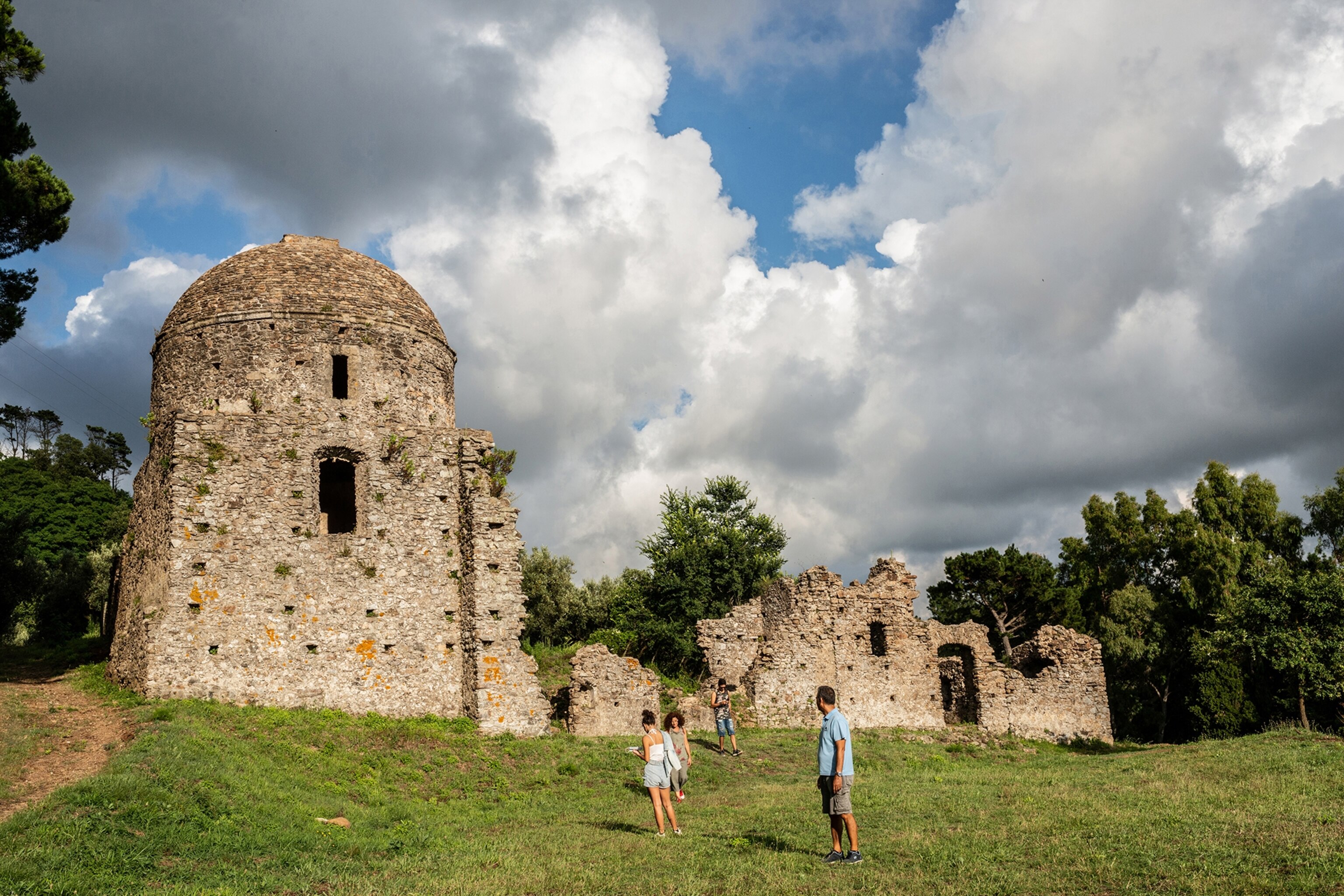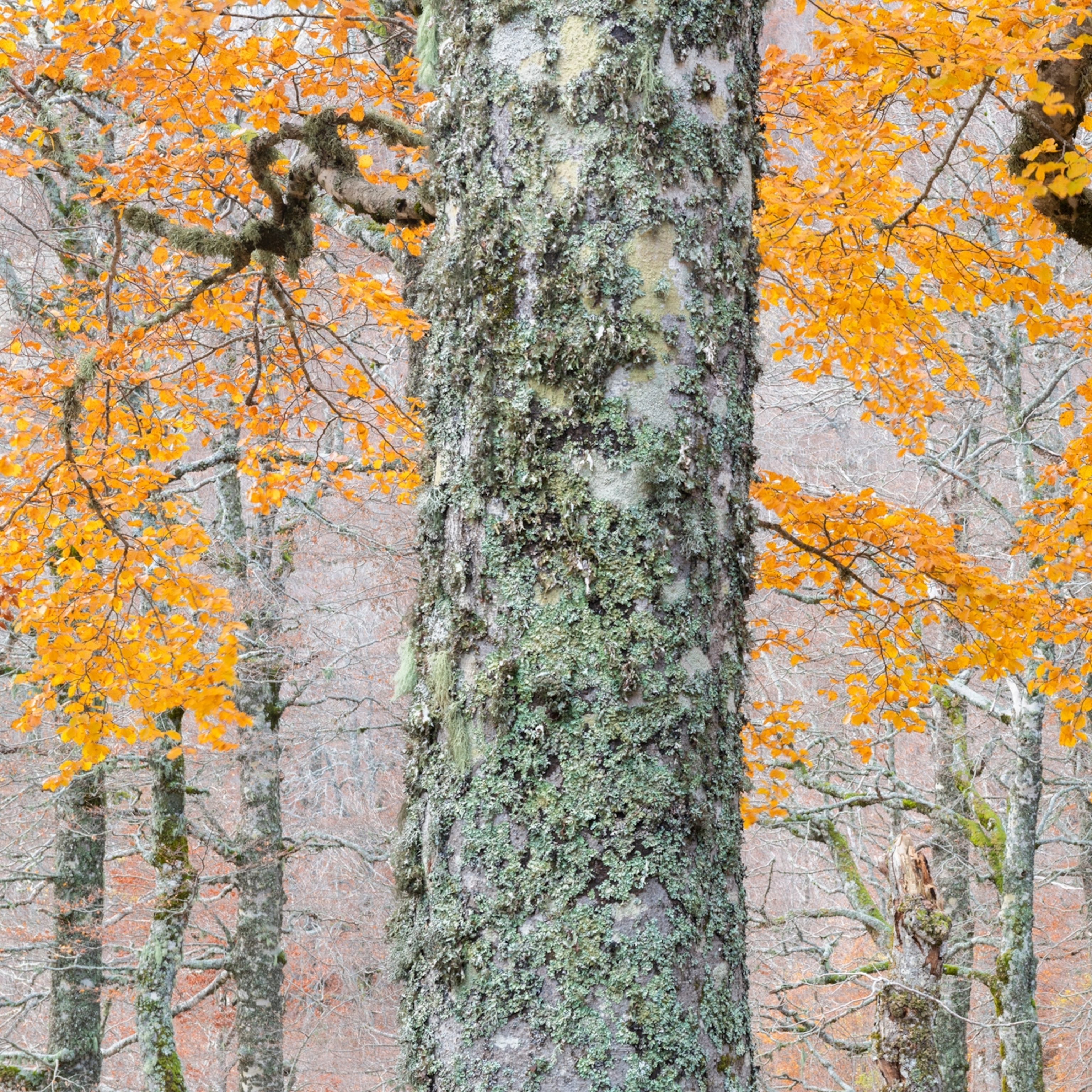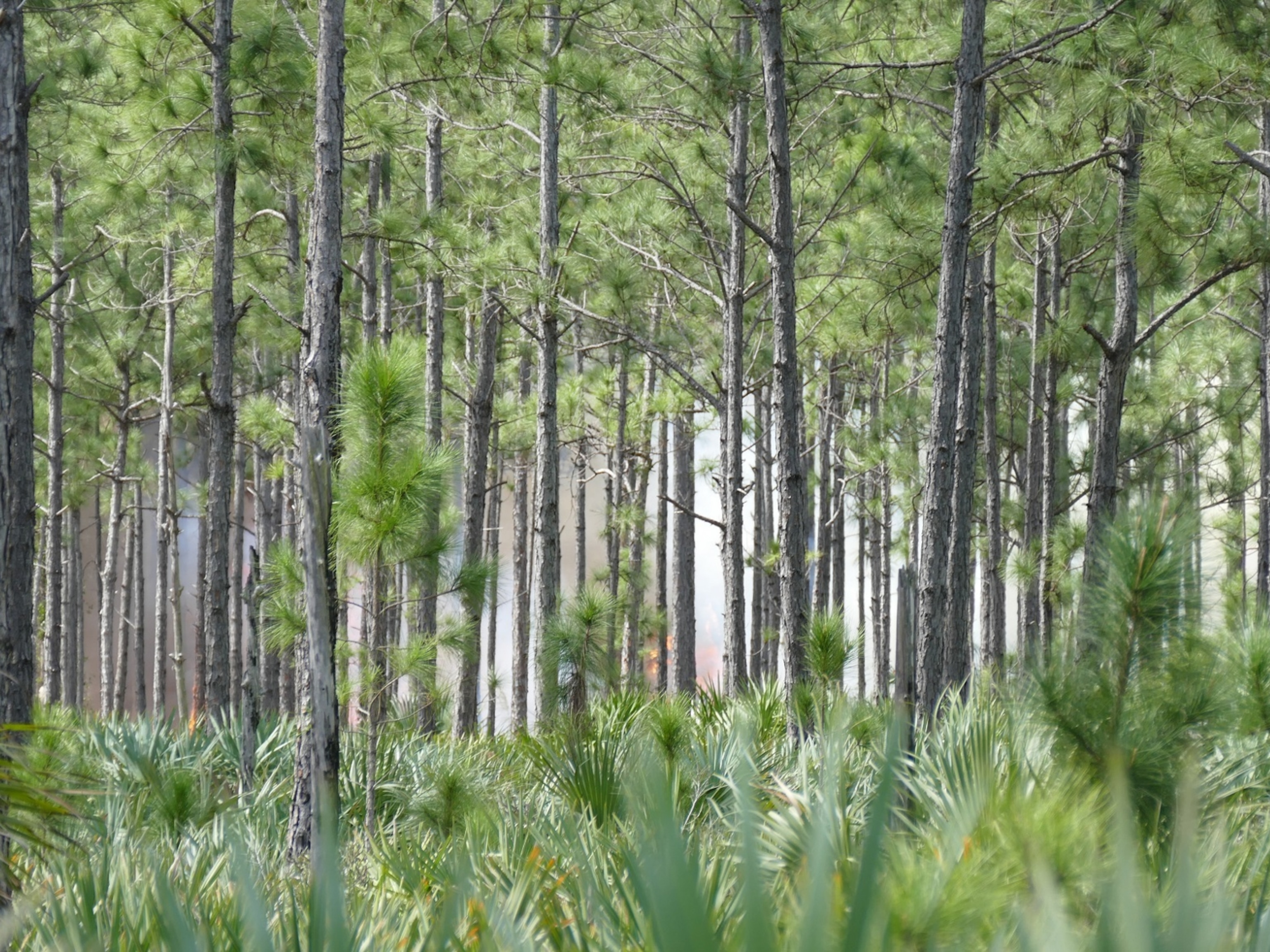
See the beautiful, ecologically priceless trees Italy is protecting forever
Dotted across Italy, 22,000 ancient trees have gained federal protection, making them cornerstones of cultural history.
Atop a small, rolling hill in Italy’s vast forests in Abruzzo, sits a big, stocky tree—the Pontone beech tree. This beech, however, is deceiving: It is not one but up to seven coexisting beech trees fused together through their bark, forming a broad, bulging base. Its thick, tentacle-like branches reach nearly 70 feet into the sky; its dense network of roots weaves in and out of the soil, entangled with those of countless more young beeches that surround it.
“This is the ‘mother beech tree’,” says Romano Visci, a ranger for the National Park of Abruzzo, Lazio and Molise. “It provides the seeds for other beech trees to grow.”


For centuries, beech trees in this part of the forest have been chopped down predominantly for firewood, to help villagers endure harsh winter months when temperatures can reach minus 5 degrees Fahrenheit. The Pontone beech tree, however, was kept intact by locals to disseminate its seeds, allowing it to grow to its current stature, says Visci. While the tree’s age is still disputed, locals say it could be up to 750 years old; it has become an iconic symbol of the park.
When he first saw it 40 years ago, says Alberto Cocuzzi, another park ranger, “I never really could imagine that a tree of this kind could exist.”
The Pontone beech tree is just one of 22,000 trees spread across Italy recognized for their unusual beauty, surprisingly old age, or social and cultural significance. Historically, these trees, known as “monumental trees,” were protected primarily for their remarkable aesthetic and historic symbolism. In recent decades, however, they have also been evaluated for the myriad ecological benefits they provide, including their role in sustaining niche, biodiverse microhabitats for many species.
“What was added was this ecological value,” says Livia Zapponi, an ecologist at the Edmund Mach Foundation, who has studied Italian monumental trees. “Microhabitats host incredible amounts of animals and threatened species.”
Legal protections expanded to include aging and decay
In 1939, Italy passed its first law to explicitly protect monumental trees under a clause that considered them “immovable things that have remarkable characteristics of natural beauty.” This law, however, encouraged a narrow, appearance-based approach to the conservation of monumental trees, says Luciano Sammarone, director of the National Parks of Abruzzo Molise, and Lazio.

Far from being merely aesthetic objects, monumental trees are drivers of biodiversity, Zapponi says. Rotting branches, gaping holes, deep crevasses, and other characteristics that suggest aging and decay have traditionally been seen as malformations. But these same features are responsible for attracting insects and their larvae, mushrooms, molds, lichens, birds, and small rodents. Some of these tree-dwelling species are endangered, like the Rosalia longicorn, a rare beetle that lives inside the bark of the Pontone beech tree.
“It's actually a cultural shift because, nowadays, we propose to preserve these trees for something that in the past were considered defects,” says Zapponi.
Over the years, a number of key regional and national laws have expanded the initial 1939 environmental law to reflect a more holistic approach to protecting these trees. Most recently, in 2013, Italy outlined a clear set of criteria for defining monumental trees that includes extreme longevity, unusual dimensions, rarity of species, historical and cultural significance, and ecological value.


Monumental trees can be found all over Italy—in private villas, churches, and manors, in national parks and wooded pastures. Since 2013, over 3,500 of the most “noteworthy” monumental trees have been added to a growing national registry. Anyone caught illegally damaging or knocking down these trees may incur a hefty fine as high as 100,000 euros [$118,000].
Often, the trees have riveting tales, myths, and legends about how they came to grow so large and in such varied locations. The genesis of the 800-year-old cypress tree of St. Francis, so the story goes, began when Saint Francis of Assisi returned from a stroll with a walking stick which he no longer needed and tried to burn. The stick sizzled but didn’t catch fire so he decided to plant a tree with it instead, allegedly saying, “If you do not want to burn, grow up!”
That tree, now a knotty, muscular mass located in the Convent of Santa Croce, inside Villa Verucchio, is visited by pilgrims who gather its cones from the ground in the hope of growing “blessed trees.”
Another tree, the 1,000-year-old plane tree of Curinga, located in the Calabria region, has a large, cavernous opening about 10 feet wide. Legend holds that shepherds used this space to shelter from rain, huddle around fires, and keep small herds of sheep, says Cesare Cesareo, a former teacher and environmentalist who has visited the tree frequently for decades. The tree is thought to have been planted by a Basilian monk, who brought a small plane tree with him from an unspecified country in the Middle East.


Many monumental trees gain their recognition for being remarkably old, large, or striking. One olive tree located near the small village of Villastrada, in the region of Umbria, may be up to 2,500 years old, dating to the Roman Republic.
“Its value is in being a monument that is not just made out of bricks or marble—but rather something that is alive,” says Maurizio De Ponti, an olive oil producer in the region. "You can interact with [the tree] every day, even if just to sit down and meditate beside it, go on a walk, or observe it. It comforts you with its simple presence.”
The olive tree has withered away with age, endured countless climatic events, and entirely lost its core, but its multiple outer trunks are still alive.
Trees that can fight off cancer and pests
Monumental trees may be enormous, imposing, and seemingly immune to death, but they are actually highly sensitive to change, explains Zapponi. They tend to rely on a very specific mode of existence marked by prolonged periods of stability. Even minimal interference with their environment can result in serious damage or death. Land intensification, deforestation, climate change—all pose serious threats to the continued survival of these trees.
And yet, the trees are also exceptionally resilient: they can stave off cancers, diseases, pests, and continue living for centuries even when significant chunks of their branches and trunks have fallen apart. “They are like the maximal expression of resilience,” says Zapponi.


This year, Abruzzo faced a particularly harsh winter, bringing unusually high levels of snow. The Pontone beech tree survived, but one of its trunks collapsed under the crushing weight of the snow. That wood, however, is not going to be thrown away or chopped up to burn, says Visci. It will remain there to nourish an entire ecosystem.
“The beech tree—the older it gets, the more it rots, the more it can provide food. It's a chain; it's an ecosystem,” he says.
Small water voles scatter up and down the broken trunk. Woodpeckers fly in, chipping away at the rotting wood, looking for larvae and bugs. Disc-shaped mushrooms have emerged like blisters on the branch's side, eroding the bark while beetles and ants gnaw at its interior. The fallen branch may not be aesthetically beautiful, says Cocuzzi, but it is so much more.
“The power of these trees is that they can keep giving to nature until the very end,” he says.

Elisabetta Zavoli is an Italian documentary photographer whose work focuses on global environmental issues and the relationship between humans and plants.
You May Also Like
Go Further
Animals
- Octopuses have a lot of secrets. Can you guess 8 of them?
- Animals
- Feature
Octopuses have a lot of secrets. Can you guess 8 of them? - This biologist and her rescue dog help protect bears in the AndesThis biologist and her rescue dog help protect bears in the Andes
- An octopus invited this writer into her tank—and her secret worldAn octopus invited this writer into her tank—and her secret world
- Peace-loving bonobos are more aggressive than we thoughtPeace-loving bonobos are more aggressive than we thought
Environment
- Listen to 30 years of climate change transformed into haunting musicListen to 30 years of climate change transformed into haunting music
- This ancient society tried to stop El Niño—with child sacrificeThis ancient society tried to stop El Niño—with child sacrifice
- U.S. plans to clean its drinking water. What does that mean?U.S. plans to clean its drinking water. What does that mean?
- Food systems: supporting the triangle of food security, Video Story
- Paid Content
Food systems: supporting the triangle of food security - Will we ever solve the mystery of the Mima mounds?Will we ever solve the mystery of the Mima mounds?
History & Culture
- Strange clues in a Maya temple reveal a fiery political dramaStrange clues in a Maya temple reveal a fiery political drama
- How technology is revealing secrets in these ancient scrollsHow technology is revealing secrets in these ancient scrolls
- Pilgrimages aren’t just spiritual anymore. They’re a workout.Pilgrimages aren’t just spiritual anymore. They’re a workout.
- This ancient society tried to stop El Niño—with child sacrificeThis ancient society tried to stop El Niño—with child sacrifice
- This ancient cure was just revived in a lab. Does it work?This ancient cure was just revived in a lab. Does it work?
Science
- The unexpected health benefits of Ozempic and MounjaroThe unexpected health benefits of Ozempic and Mounjaro
- Do you have an inner monologue? Here’s what it reveals about you.Do you have an inner monologue? Here’s what it reveals about you.
- Jupiter’s volcanic moon Io has been erupting for billions of yearsJupiter’s volcanic moon Io has been erupting for billions of years
- This 80-foot-long sea monster was the killer whale of its timeThis 80-foot-long sea monster was the killer whale of its time
Travel
- How to plan an epic summer trip to a national parkHow to plan an epic summer trip to a national park
- This town is the Alps' first European Capital of CultureThis town is the Alps' first European Capital of Culture
- This royal city lies in the shadow of Kuala LumpurThis royal city lies in the shadow of Kuala Lumpur
- This author tells the story of crypto-trading Mongolian nomadsThis author tells the story of crypto-trading Mongolian nomads







